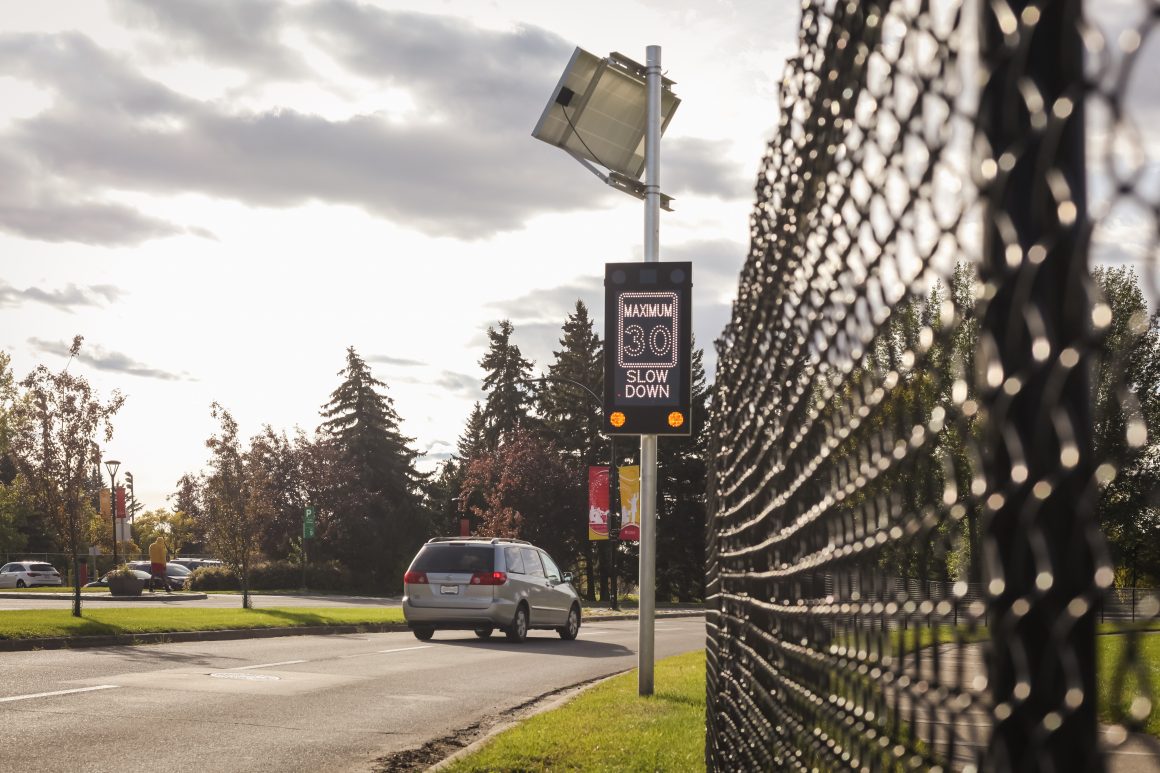
Reducing residential speed limit in Calgary to 30 km/h the right decision
By Mariah Wilson, September 26 2018 —
Amid recent discussions surrounding Ward 7 Coun. Druh Farrell’s motion to reduce Calgary’s residential speed limit to 30 km/h in order to increase pedestrian safety, I’m shocked that some Calgarians are calling this a ‘war on cars.’ While the onus of road safety doesn’t completely fall on drivers, it’s irresponsible to perpetuate the expectation that drivers have the right to barrel down a quiet residential street when studies repeatedly show that drivers are more likely to be the cause of pedestrian-vehicular collisions.
In 2016, the city released data spanning over a 10-year period to the Calgary Herald reporting that 53 per cent of pedestrian-vehicular collisions occur when the pedestrian had the right of way, whereas only 21 per cent occurred when the driver had the right of way. Therefore, a reduced speed limit in residential areas, not main arterial roads, is justified and necessary.
In surrounding communities including Airdrie, a 30 km/h speed limit has been successfully implemented on residential roads, ensuring that community members who primarily walk, such as children and the elderly, remain safe.
A reduced residential speed limit ties into the City of Calgary’s pedestrian strategy, Step Forward, launched in 2016. This strategy outlines a plan to encourage a culture of walking, fixing decades-long walkability concerns following city growth that was primarily automobile-focused.
Furthermore, Farrell cites data from the World Health Organization (WHO), highlighting that pedestrians have “a 90 per cent chance of surviving car crashes at speeds of 30 km/h or lower but less than a 50 per cent chance of surviving impacts at 45 km/h.”
Just let those numbers sink in.
A 20 km/h reduction in your speed can be the difference between life or death for someone. Someone who has friends and family who are waiting for them to return home. Someone who adds meaning and value to this world. Someone who has no reason to die, except for being in the wrong place at the wrong time.
My friend was that someone. And it’s something that still pains me to say, two years after her accident. She was my mentor at work. She was suave and cool. She was only four years older than me and had recently graduated from university. I was excited for all of the wisdom she would pass onto me. But she didn’t have the opportunity to because she was struck and killed while crossing the street.
The WHO’s report describes exactly what would have transpired as she was hit. While she was walking her dog, a negligent driver struck her knee-joint area, accelerating the lower extremity of her body forward while rotating and accelerating her upper body. The final blow was to her head as it hit the bonnet of the car at a velocity that was close to that of the car itself.
Within 14 hours of being hit and rushed to the hospital, her lifeline was pulled from the device keeping her alive. With it went her witty sense of humour, her compassion for those around her and her rapturous spirit. I held her mom while she sobbed. I sat by her sister when they received the news she was brain-dead. I cleaned out her office while my boss cried. I underwent a year of psychological treatment because of my PTSD. It all could have been prevented if her district had marked pedestrian crosswalks and lower speed limits.
On average, Calgary has one pedestrian-vehicular accident each day, which is one too many. We must eradicate that number through careful driving, better pedestrian infrastructure and more road safety education for all. City council’s motion to lower residential speed limits can be the first of many initiatives that prioritize thriving and healthy communities where everyone can have access to safe transportation.
